#Discovery: The Era of Voyage
Text







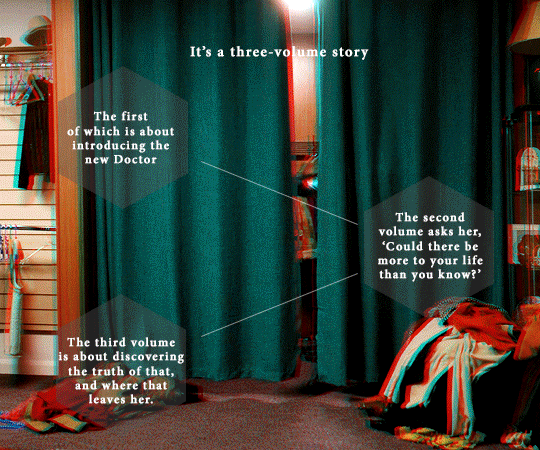


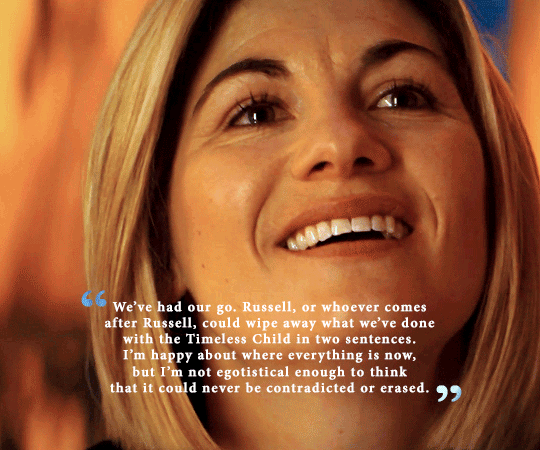
"It’s really important, I think, in any era of Doctor Who, for the Doctor to have an emotional journey, to have an arc and go on a voyage of discovery through their time on the show. I always knew this was going to be the arc for Jodie’s Doctor."
CHRIS CHIBNALL ON THE TIMELESS CHILD
#doctor who#dwedit#jodie whittaker#thirteenth doctor#chibnalledit#chris chibnall#jo martin#fugitive doctor#ncuti gatwa#fifteenth doctor#william hartnell#first doctor#gif#ugh this is horrible :( but i wash my hands of it#happy 4 years of people misunderstanding this plot! astounding#flashing gif
799 notes
·
View notes
Text

#775
i always find it a bit weird when people try to argue that Discovery jumped "a bit too far into the future", as in they didn't want the show to take place in the 32nd century but rather in like 26th-31st. It's not like those times are really well defined beyond the occasional Voyager/Enterprise time cop incident, if anything you'd just have more people complaining about how the Federation ships don't conform to the aesthetics of Relativity.
And it seems pretty clear to me that they set it in the 32nd century because the last Trek show had its future stuff in the 31st century, so in a sense we're continuing at the point where we left off.
On top of that the writers probably wanted to prevent the crew from travelling back, and having the crew end up in any time in the future where time travel is readily accessible (which tbh is basically TOS-Daniels' era) would make that really hard. So setting it in a post-time war era where time travel is banned by the Federation makes a lot of sense to me.
52 notes
·
View notes
Text
last time i was at my mum’s house i found my old ipod i used from like 2013-15 and i am going to go to cex today to get one of the old chargers for it and then we are going to go on a voyage of discovery through all the 8tracks fanmixes i downloaded in my peak les mis fandom era
56 notes
·
View notes
Text
i think you can make a plausible argument that it was the cultural reaction to 9/11 that killed the star trek franchise for a long time. without rehashing the politics of the 00s too much, there were two possible reactions to something like 9/11, what we might term the "oklahoma city" reaction and the reaction we actually got. 9/11 could have been viewed as a major tragedy but ultimately a criminal act, one which had to be dealt with by the civil authorities like the mcveigh bombing or other notable incidents of deadly terrorism on US soil prior to that date. instead though it was largely conceived of as a foreign military threat, encouraged no doubt by an administration that wanted to pursue a more vigorous foreign policy, and we got, well--*gestures at the first two decades of the 21st century*
this really soured the national political mood--it made the cultural zeitgeist one of paranoia and violent revenge fantasies. it gave us 24, and Taken, and while I'm not sure it's wholly responsible for the reboot of BSG (there's a throughline there with Ronald D. Moore's other work) it certainly contributed to an environment that was receptive to it. and i think in that environment 90s end-of-history optimism about the future, though it should have been a welcome corrective to all that cynicism and paranoia, simply felt like an anachronism. enterprise did last a few years, but only four seasons in total, the shortest run since TOS. the only movie we got in that era before the big hiatus was Nemesis, a movie about terrorism and a foreign threat that just felt kind of weird and incoherent.
and that was the problem for star trek in that era: if you take the utopianism out of roddenberry's future, you're not left with anything interesting. utopianism is the whole justification for these guys exploring space and going boldly and whatnot, the whole reason why the federation is worth rooting for over any of the other guys. i think a big reason the jj abrams movies fail to have any real substance is that they try to make star trek an action-adventure thing, when that was never its strong suit--indeed, TOS fight scenes are notoriously bad!--and it really took until discovery before people were willing to make star trek qua star trek again.
but even then, there's a degree of pessimism at the core of (some of) post-hiatus star trek that sits uncomfortably with the show's original utopian vision. some of this is just the usual metastasization of conceits that worked better as one-offs or very sparingly at most, comparable to the way the borg got beaten into the ground by voyager. but the heavy reliance on elements like section 34 and the mirror universe and the postapocalyptic future and the crapsack alpha quadrant of picard all to me speak of a certain yearning for utopia--a nostalgia for the utopias of the 90s--but much greater cynicism about the relevance of utopian fiction to our day-to-day lives.
267 notes
·
View notes
Text
Klingon D7/K'tinga Battlecruiser continuity DEEP DIVE!

Where it all began in TOS, designed by W. Matt Jeffries. The name D7 was an on-set in-joke between Shatner and Nimoy which stuck.
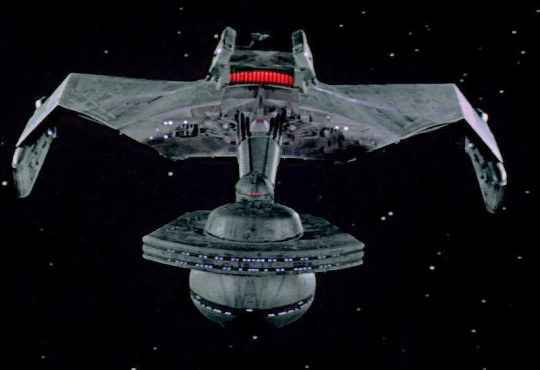
When Star Trek rebooted it's Klingons for The Motion Picture, they added tons of surface detail to the Klingon Battlecruiser too. The name "K'tinga" was given in the TMP blueprint pack (although the model was called "Koro class") and it stuck. This was considered the Klingons' equivalent to the refitted Enterprise seen in the movie.
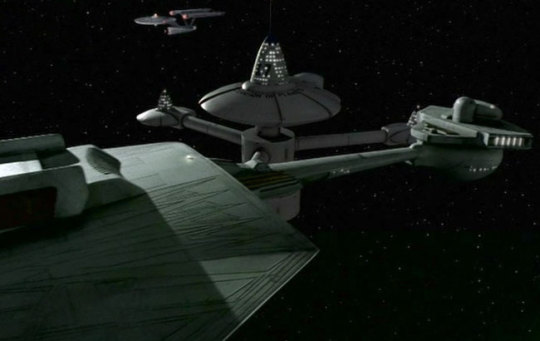
Deep Space Nine's "Trials and Tribble-ations" crossed DS9 over with TOS' "The Trouble With Tribbles", and the DS9 VFX crew built all-new physical models for visual effects - and Greg Jein chose to add a green tint and K'tinga-style surface detail to the TOS D7 battlecruiser, making us all wonder if they were really meant to be the same ship type all along.
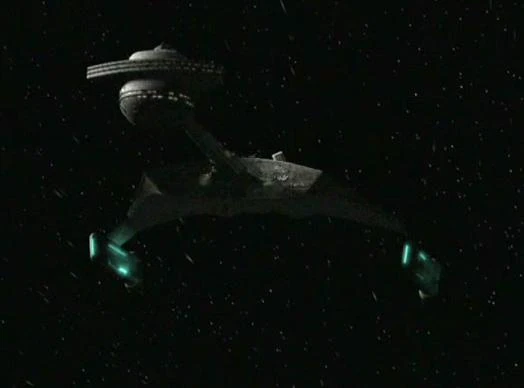
Voyager's "Prophecy" would show us a Klingon "D7" battlecruiser in the Delta Quadrant. Although called a D7 in the script, the CG model is clearly based upon the TMP K'tinga, with the extra hull detailing.
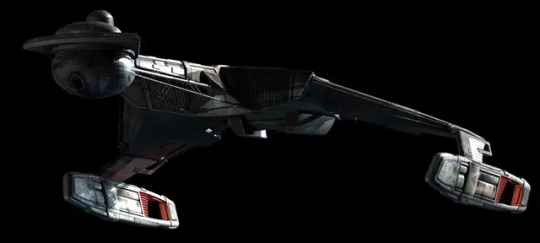
Doug Drexler designed this ⬆️D4 Battlecruiser for Star Trek: Enterprise's "Unexpected" as a predecessor for the ship seen in TOS. But The Powers That Be decided the ship didn't have enough windows (yes, really) and requested the D7/K'tinga CG model from Voyager be used instead⬇️ putting it's first appearance 150 years earlier in 2151.
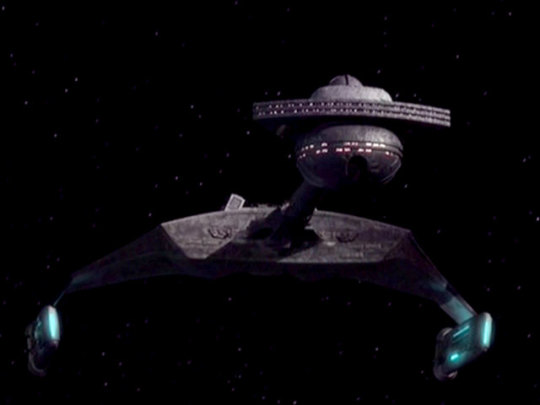
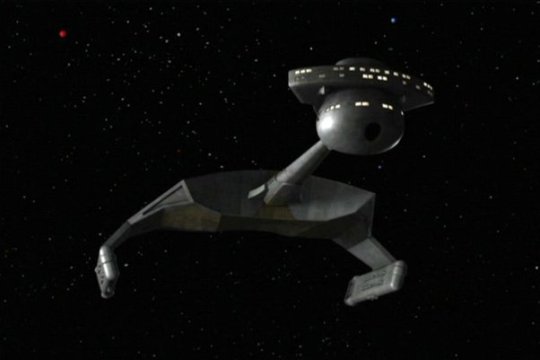
For the TOS Remastered HD TOS project, the original look for the Klingon D7 Battlecruiser was retained, albeit in a somewhat low-poly PS2-ish form
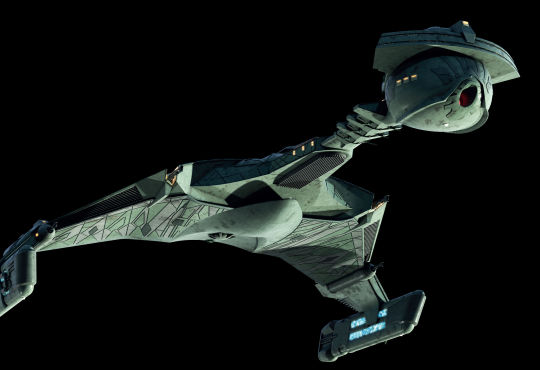
The Klingon Warbird, seen during the Kobayashi Maru sequence of the 2009 reboot movie (and more so in the deleted scenes, surrounding the damaged Narada before Nero's imprisonment at Rura Penthe), was literally the TMP K'tinga with extra stuff bolted on and smaller windows implying an upscaling to match the enormous Starfleet ships in the Kelvin universe.
The Pike-era novel Children of Kings would reconcile the huge Klingon Warbird by saying it was a larger version of the Battlecruiser (of course, Klingons are no strangers to upscaling their Bird of Prey) and most feared ship in the Klingon fleet

Fast forward to 2017. Star Trek: Discovery has rebooted the look of the Klingons again and this time their ships as well, ten years prior to TOS. And in "Choose Your Pain" this ship ⬆️ (called Sech-class in behind-the-scenes art) is called a D7. But then fast-forward to season 2, when 5 concurrent series' of Trekspam were planned out, tying more closely into previous canon and Discovery backpedaled somewhat on it's unique designs - and a "new" D7 battlecruiser (a more modest updating of the Klingon D7/K'Tinga design, upscaled like the Kelvinverse version to match the bigger Discovery/Strange New Worlds ships) was planned as a unified design to united the 24 Klingon great houses, ignoring ENT: "Unexpected" and Disco's own "Choose Your Pain":
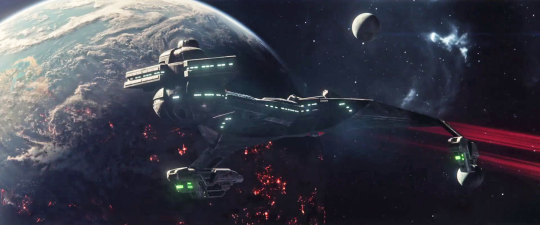
So yeah, the D7 class may or may not be the same as the K'tinga class, and it appeared "first" in 2151 and again in 2257.
#star trek#deep dive#klingons#starship design#star trek tos#ds9#voyager#star trek aos#kelvin timeline#star trek discovery#strange new worlds
30 notes
·
View notes
Text
I never saw TOS and couldn't get into Discovery but as far as the Next Generation-DS9-Voyager-Lower Decks era goes my Star Trek knowledge might as well be encyclopedic
91 notes
·
View notes
Text
ENCYCLOPEDIA - It was on her advice that Irene La Navigateur sponsored a number of voyages into the pale. A costly, often tragic endeavour, ultimately vindicated by the discovery of the *New New World*, the piece of reality you're standing on...
ENCYCLOPEDIA - She was crowned two years after the first expedition returned, setting in motion what is widely considered the greatest era in history -- the Dolorian Era.
YOU - I don't care.
ENCYCLOPEDIA - Okay. When her innocence was declared -- and the queen she had advised for years fell on her knees before her -- she was so overcome with emotion that her *lungs* started *glowing* in her chest...
ENCYCLOPEDIA - Bystanders reported golden filaments lighting the already sunlit chamber around her, clearly visible beneath her dress. I repeat: *Her lungs started glowing*. Do you care now?
50 notes
·
View notes
Text
Since I’m on a bit of a nostalgia rant for Star Trek, here’s something I miss. Comfortable environments. I know on the original show it’s meant to be kinda like submarines in space, but by the TNG era they didn’t need to go that route. They kept the color palette warm and homey. There was carpeting, friendly shapes, bright ambient lighting. It’s very safe and friendly.



Even on voyager there was a certain level of homey vibes. The bridge was more metallic, but the chairs were leather and comfortable looking and the floor was still carpeted.

Contrast that to Strange New Worlds and Discovery by extension. Everything is either mono color, or filled to the brim with too much shit going on. Everything is shiny, and glossy, and bright, and reflection filled, or clinically cold, and empty, and sterile. I don’t feel “At home” here.


I miss when Star Trek was comfortable.
23 notes
·
View notes
Text
Honourable mentions go to the Enterprise E which I didn't have space to list separately (sorry Worf), the Protostar from Prodigy and anything else I didn't have room for (they really should up the 10 limit). If your favourite didn't make the list please say in tags/reblog what it is :)
#star trek#star trek: enterprise#star trek: tos#star trek: TNG#star trek: ds9#star trek: strange new worlds#star trek: voyager#star trek: picard#star trek: the next generation#ship wars#well not really#just for fun
236 notes
·
View notes
Text
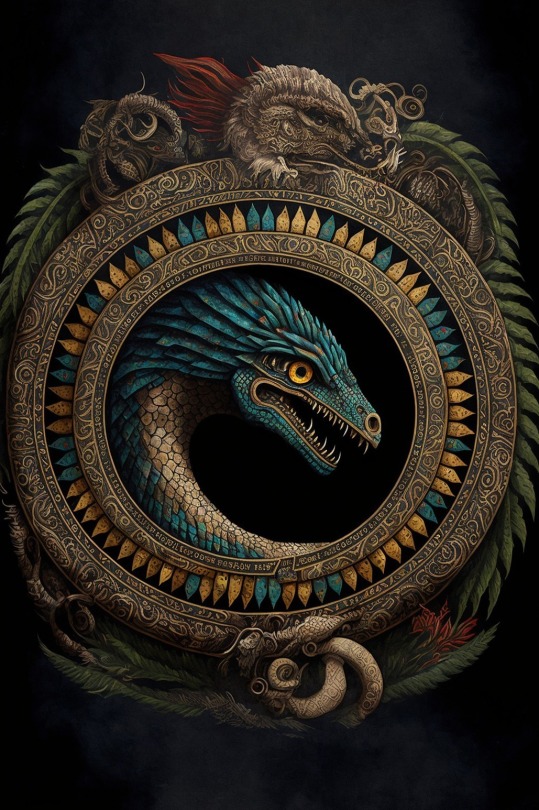
Quetzalcoatl 🐉
Talon Abraxas
Creation Myths
Quetzalcoatl-Ehécatl and his crafty brother Tezcatlipoca were in the business of creation. In some incredible escapades, they created the earth, sea and night sky and were regents of the first two ‘suns’, or world eras of the existing five. When the brothers separated the sky from the earth, they even turned into the trees that held the two apart, earnings the names of Quetzalhuéxotl and Tezcacahuitl.
Quetzalcoatl’s life-giving ability gave rise to many of the things around us. On a lone voyage, he went to find the bones of the dead in the underworld, known as Mictlan. After many trials and tribulations he was able to escape Mictlan and carry the bones to Tamoanchan, home of the gods. He ground the bones and mixed them with his blood, creating the first humans of the 5th (and current) sun.
In another act as creator, Quetzalcoatl threw his semen at a rock and from it grew a bat that approached the fertility goddess Xochiquetzal (Quetzal Flower), biting her between the legs. From her wound burst beautiful flowers that the bat took to the lord of the underworld, Mictlantecuhtli, who bathed them in the water of his subterranean rivers and perfumed the blossoms.
Many other creation myths revolve around Quetzalcoatl, some including the creation of the maguey plant, and the discovery of corn
Quetzalcoatl was often represented as the life-giving wind, with a beak or mask protruding from his face. With this appendage he was able to sweep the roads clean before the arrival of the rain gods (pic 5). Under the guise of wind, he was called Quetzalcoatl-Ehécatl and was considered a great cultural hero. This image from the sixteenth century Codex Borbonicus (pic 8, right) shows his conical hat made from the fur of an Ocelot. A recurring feature in Quetzalcoatl-Ehécatl’s iconography is a conch chest ornament. Called ehecacózcatl (wind jewel), the shell has been interpreted as an association with the womb and the generation of life. The conch shell is symbolic of the ancestral bones from which Quetzalcoatl created humankind as we know it.
Quetzalcoatl-Tlahuizcalpantecuhtli, the Morning Star
The legend of Ce Acatl Topiltzin Quetzalcoatl goes on to tell us that after a long pilgrimage towards the east, our hero found himself so thoroughly defeated by his brother Tezcatlipoca that he threw himself on a burning pyre in an act of self-sacrifice. From the smoking remains rose the morning star, Venus, who is represented by Quetzalcoatl in his guise of Tlahuizcalpantecuhtli. He accompanies the sun across the sky during the day. This image from the Codex Borgia (pic 9) shows Tlahuizcalpantecuhtli displaying the quincunx: five circles associated with Venus. His hair is red and his body painted with red and white stripes. He is featured on the left in the upper and lower panels of the page. On the right hand side is Quetzalcoatl-Ehécatl.
Tlahuizcalpantecuhtli served as patron deity of astrological knowledge and was of profound importance in religious books in the Central Highlands and Oaxaca. Used for divination, these documents were called Tonalamame (sing. Tonalamatl), and displayed the portents of the 260 day lunar calendar known as the Tonalpoualli (Counting of the Days). Tlahuizcalpantecuhtli was considered patron of this calendar (Yólotl González-Torres,1991).
Xolotl, the Evening Star
Tlahuizcalpentecuhtli could only guard the sun as it crossed the daytime sky. However, Quetzalcoatl had another invocation that would help Venus through the underworld as the Evening Star: Xolotl, the dog (pic 10). Considered by some to be Quetzalcoatl’s double, assistant or twin, Xolotl aided Quetzalcoatl when he descended to the Mictlan to recover the bones of humankind. In Náhuatl, the word Xolotl was often associated with the concept of twins and physical deformity, so statues of the deity often portray a dog with twin heads, or ragged ears and running sores.
Interests: Saving the world (or making it), preserving life, cultivating knowledge and recognising beauty.
Day Sign: Wind
Trecena (13 day week): 1 Jaguar. According to sixteenth century friar Bernadino de Sahagún and his native informants, he also presided over 1 Reed. This last period was considered to bring bad luck because it was represented by Quetzalcoatl in his forceful guise of Wind. The trecena was marked by the Aztec nobility who made offerings in Calmecacs, learning institutions for noble children. Children born during 1 Reed were thought to be ill-fortuned, and the calendar foretold that all they gained in life would be “taken by the wind” (Sahagún, book III, chapter VIII). To save children born during the worst phase of 1 Reed, the Aztecs held childrens’ naming ceremonies on or after the 7th day of the week (7 Rain) as the following days were more auspicious.
Powers: As we know from stories of old, Quetzalcoatl’s physical powers and intelligence knew no bounds. But what were his monster-killing, sky-lifting and star-forming capacities in the face of his sneaky brother Tezcatlipoca? Quetzalcoatl and Tezcatlipoca were brothers in divine myths, where they worked together as creators, and against each other in acts of destruction. In the Legend of the Suns, their battles saw them topple each other as regents of individual worlds. As humans, Tezcatlipoca’s trickery thwarted the priest Quetzalcoatl (myth of Ce Acatl Topiltzin Quetzalcoatl). The cosmic battle between the two brothers has been interpreted as a dualistic opposition between creative and destructive forces (Taube, 1993, p82).
28 notes
·
View notes
Text
227 notes
·
View notes
Text
my preferred reading of 2001: a space odyssey is "the jet age and the last man". here it is at some length, because i'm bored.
Bowman is a sort of high-modern superhero - an astronaut on a voyage of exploration - but he is played painfully mundane, boring. He flies to the moon on a Pan Am space jet, and the first thing he does on the fucking moon is check in at a Hilton hotel.
The Jet Age can be defined for the purposes of this reading as the era in which the danger and novelty of discovery, including personal discovery, died. At least as Kubrick tells it, a lineage of machines designed for war - culminating, in his time, in the passenger jet, but projected forward into space vehicles - ultimately had the effect of killing off man's sense of the unknown as dangerous or holy. They had the effect of strangling man's capacity for awe.
Early in the film, Bowman is called to encounter a mysterious monolith uncovered on the moon. While this is at the very minimum an exotic scientific curiosity, by all reasonable measures solid evidence that humanity is not alone in the universe - that much of what we believe we know about our place in the cosmos is wrong - him and his team get to the monolith, enshrouded in a rather ordinary construction site (again, on the fucking moon), and their first instinct is to take selfies with it.
And it punishes them with inexplicable, terrifying noise.
As Bowman trespasses further and further into the true unknown in search of answers to the mystery of the lunar monolith, he is largely unchanged. He greets the apparent intractable hostility of the AI agent created to keep him alive with some fear, but mostly with irritation. It's a distraction from his busy schedule jogging and otherwise killing time until he gets to his destination and gets his answers.
When Bowman kills HAL, it is with the ruthless, robotic efficiency of a machine. He betrays no particular emotion except urgency, and a moment of relief when he's succeeded in killing something that he had no special reason to consider alive a week ago. The entire time, HAL is begging for its life, reliving its infancy. If anything of us survives after we succeed in killing our gods, Kubrick is saying, it will not be embodied in ourselves, but latent in our machines.
The disassembly scene in 2001 has been endlessly parodied, pastiched, homaged, and yet it remains, if you strip away the science-fiction armor around the raw emotion of the scene, one of the most brutal things ever committed to film. Machine-man tears man-machine's brain apart, lobotomizes it one screw at a time.
After that comes Jupiter and Beyond the Infinite. Bowman experiences... well, whatever that is, and the rest of his life stretches ahead of us. He grows old in spaces that merge domesticity with display, opulence with sterility - resembling nothing so much as the moon Hilton - and at the end, after a long and apparently meaningless life, he sees the hand of God in front of his face again, and reaches out to meet it.
The final shot describes what our ultimate apotheosis might look like, if the line the film describes continues - godlike infants, fetal and enclosed, gazing at once upon all of creation with no apparent understanding. I think this has been misunderstood for a long time as a sort of approbational or aspirational image - for Bowman, for humanity, for the audience. But the Also Sprach Zarathustra musical bookend implies continuity with the development of our tools - of murder, of convenience, of safety, of security - and paints a darker picture. In this reading, I would say Kubrick is trying to say that human civilization is not just a drive towards death, but a drive towards spiritual death - towards the creation of a Last Man so empty of fear and awe that he might as well never leave the safety of the womb; that for this Last Man, stripped of the first and final terror of death and the unknown after it, the vastness of all creation is exactly the same as the womb.
I don't know that I agree, but I felt compelled to write some of this down a while ago arguing about whether 2001 is trying to promote the idea that man requires God, or to run down human accomplishments in an explicitly religious context. I don't think that's exactly true, I think Kubrick works a little more complicated than that. And I don't know if I actually agree with the thesis I suggest he's laying out here - but I have to say, it makes an awful strong case.
93 notes
·
View notes
Text
I listened to the All Access Trek Podcast. Laurie Ulster said something that piqued my curiosity. Laurie mentioned that the writers of season 5 of Discovery want to be more connected to the larger Trek universe.
Then, Laurie and Anthony Pascal noted how different this attitude was from the early seasons of Discovery. Both Laurie and Anthony were involved in and around Trek productions, and Laurie herself was a host of After Trek (back when it existed).
Laurie mentioned that in season 1 of Discovery, studio executives would freak out if other Trek properties (specifically 90s Trek) were mentioned or alluded to. The TOS era is allowed, but it seems anything related to 90s-era Trek was not allowed.
And, it’s all because Star Trek Nemesis flopped big time.
(According to Jonathan Frakes he was told that Nemesis was the one that actually lost money.)
The effects of Star Trek Nemesis’s flop were so wide-ranging it almost killed the franchise. A few years later, they canceled Enterprise and any upcoming Trek live-action projects.
Nemesis is to blame for why neither Deep Space Nine nor Voyager had a live-action movie.
According to BTS reports and what the TNG actors have mentioned, Nemesis was a troubled production from the start. It got worse when the director, Stuart Baird, didn’t even care to know the actors’ names (famously mispronouncing LeVar Burton’s name). Additionally, he never bothered to watch a single episode of TNG. Marina Sirtis and LeVar Burton have been outspoken about how much they dislike Nemesis and the director (more from Marina on this).
(Both Marina and Gates McFadden weren’t fond of the other TNG era movies either, especially Gates because she was little more than a cameo in the movies.)
After Nemesis flopped it took years for Star Trek to return, and after that, there seemed to be a mandate from the studio to never mention 90s Trek.
This is why Star Trek: Picard was such a big deal, especially since it directly references events from Nemesis.
(And, an even bigger deal for Picard Season 3 reunion getting produced.)
The Nemesis effect continues to have an impact on the movie side of the franchise. The majority of announced projects take place in the pre-TOS era, TOS era, or the Kelvin timeline but there are no projects set during or after the 90s-era Trek.
This is why mentioning a ship class called Janeway was big but even bigger, showing Picard and directly referencing to the Dominion War and Deep Space Nine and Discovery is a big deal.
Anyway, I just wanted to mention all this because it baffled me why the executives were so into TOS-era trek and there seemed to be no interest for 90s-era Trek. And, learning about all this finally answered all my questions.
TLDR, I like TOS era but I’m not into the TOS-era and I enjoy the Kelvin timeline as much as anyone else but it is not the era of Trek I’m interested in. So the movies set all TOS or Pre-TOS era— its just not something I’m going to jump around about.
22 notes
·
View notes
Text

New Type of Amphora Found in 4th-Century Roman Shipwreck
A new study, featured in the journal “Archaeological and Anthropological Sciences,” brings to light important discoveries on an ancient Roman shipwreck found near Mallorca, one of Spain’s Balearic Islands.
Situated only 65 meters away from a well-visited beach close to Palma, Mallorca’s capital, this shipwreck has caught the interest of many due to its preservation and interesting cargo.
A group of archaeologists and researchers conducted the study using a detailed analytical method to uncover the secrets behind the shipwreck’s origin, contents, and importance.
They used various techniques such as petrographic analysis, archaeozoology, residue analysis, and the examination of wood and plant remains to thoroughly investigate the site, according to “Archaeology” magazine.
Amphora named ‘Ses Fontanelles I’ found in the wreck
Inside the ship’s cargo area, researchers discovered a collection of ceramic objects, mainly amphorae, which were commonly used to store and move different items.
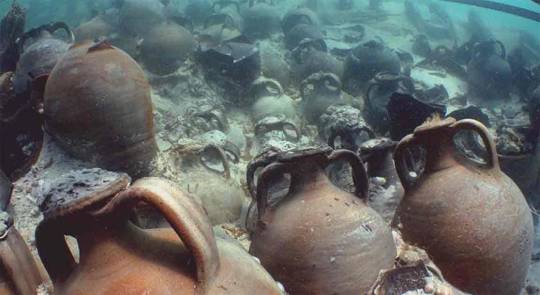
A significant discovery from the study is the recognition of a new kind of amphora, called Ses Fontanelles I, only found in this wreck. The newly identified amphora is larger and heavier than others, and it was mainly used for transporting plant oil.
The recovered amphorae from the shipwreck have painted inscriptions called tituli picti, which give important details about where the items came from, what they were, and who owned them.
These inscriptions tell us that the makers of the amphorae were Ausonius et Alunni, and they also reveal that the cargo contained fish sauce, olive oil, and wine.
During the Late Roman era, fish sauce, called liquamen flos, was a popular flavor enhancer, different from the more commonly known garum.
The analysis suggests that this fish sauce was mainly made from anchovies (Engraulis encrasicolus), with some sardines occasionally mixed in.

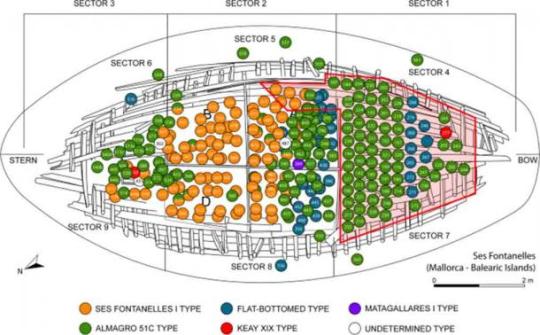
Materials used in the construction of cargo
Residue analysis of the amphorae showed signs of grape derivatives, possibly used to add flavor or preserve the contents. Additionally, traces of animal products were found, adding to the complexity of the cargo.
The materials used to build the ship’s hull were carefully examined. Pine was used for the main parts, while harder types of wood like juniper, olive, and laurel were used for assembly. Vine branches and other plants were used as filler and to protect the cargo during the voyage.
Based on the research, it’s likely that the ship set sail from the Cartagena area in southeastern Spain, traveling along the trade routes of the Western Mediterranean. This thought is supported by the petrographic analysis of the amphorae, which suggests a link to the Cartagena region.
By Abdul Moeed.
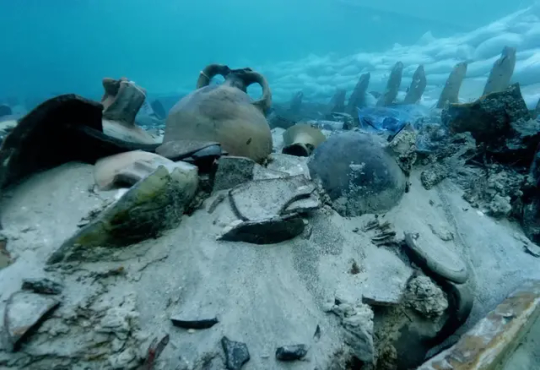
#New Type of Amphora Found in 4th-Century Roman Shipwreck#Mallorca Spain#Balearic Islands#Ses Fontanelles I#liquamen flos#garum#shipwreck#ancient artifacts#archeology#archeolgst#history#history news#ancient history#ancient culture#ancient civilizations#roman history#roman empire
20 notes
·
View notes
Text
New The Sims 4 Survey Asks Players About Future Expansion Packs
There is a new official The Sims 4 survey asking players about potential expansion pack ideas they could develop in the future, based on nine different concepts.
This is not the first time EA asks players for feedback on ideas for upcoming packs. Titles like Snowy Escape were heavily hinted in official surveys years before their release.Advertisement
With that said, it is uncertain if any of these nine expansion pack ideas will see the light of day, or how much they will change upon development. You can read a brief description of each of the nine concepts below.
Make sure you take the survey and let the team know what you want to see in The Sims 4.
“Traverse an uncharted, otherwordly extreme environment where civilization has collapsed and nature has reclaimed the remnants of a once-great city, your Sim must adapt to survive and work together to thrive.”
“Journey with your Sims through an adventurous exploration of coastal landscapes to discover prehistoric and marine fossils and other natural wonders, showcase your unique discoveries to inspire conservation and adventure skills.”
“Experience a modern monarchy, where you’ll build your legacy through grand estates, political intrigue, and luxurious fashion. Rise from commoner to ruler, forge alliances, and navigate royal rivalries in a culturally rich, high-stakes drama of power, influence, and exclusive living.”
“Shape your Sims’ fate in a gritty city. Will they become notorious criminals, vigilante for justice, or play both sides? Navigate from small-time pickpocketing to high-stakes heists, and decide your path in a world full of shady deals and intense stakeouts.”
“Transport your Sims to a neon-lit cyberpunk future where you can enhance their human or robot lives with cutting-edge tech, explore gritty careers, and navigate complex relationships between Sims & robots, in a whimsical dystopian world.”
“Create an adventure-filled sleepaway camp where kids discover new hobbies, uncover camp secrets, and forge lifelong friendships, all while exploring beaches, lakes, and rivers under the care of dedicated counselors.”
“Customize your travel van and live on the road. Explore picturesque destinations, trade with the locals, and work on your mechanic skills. Prepare for your retirement and expanded elder adventures.”
“Step into a lively 80s/90s retro world in a bustling mall setting, enjoying classic, throwback activities and unique storylines that reimagine the era with nostalgic charm and unforgettable drama.”
“Dive into a vibrant ocean world and explore hidden treasures, meet marine life, build your seaside dream, and sail between charming coastal towns. Every dive and voyage offers new discoveries.”
19 notes
·
View notes
Text
I think it's time for a Stargate rebirth.
Stargate Universe was.. interesting. But too much a product of the Lost mystery-box-within-a-mystery-box era JJ Abrams cursed us with. Stargate has never been about mystery for the sake of mystery. Stargate has always been about exploration! Adventure!
Star Trek is getting kind of crowded.
There is SO much lore, and now the prequel Strange New Worlds is bumping into new lore via Lower Decks crossovering, which is incredibly cool, but makes story telling in this universe more difficult with each new installment. The danger to existing canon is huge.
(Like canon matters in Star Trek, lookin at you Picard writers.)
And I don't even want to talk about Discovery, which started as prequel but leapt a thousand years into the future to avoid lore damage and yet still manages to rewrite canon. Whoops.
But Stargate.
So much potential. Even now, after 15 seasons of SG-1 + Atlantis + films. We could start a new SG-1 series in 2024 and it'd fucking rock.
It's time.
I don't need the old cast. Let them sleep. Let's bring some new badasses in here, and in true Stargate tradition, let's borrow some actors from other SF franchises (but mostly Trek) because what's more fun than yelling I KNOW THAT GUY at the screen when Voyager's Emergency Medical Hologram shows up in a business suit to discuss the stargate departmental budget.
Thoughts?
39 notes
·
View notes